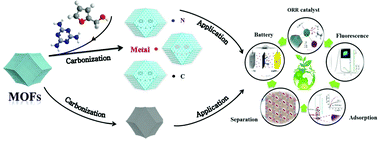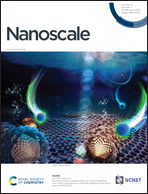From metal–organic frameworks to porous carbon materials: recent progress and prospects from energy and environmental perspectives
Abstract
Metal–organic frameworks (MOFs) have emerged as promising materials in the areas of gas storage, magnetism, luminescence, and catalysis owing to their superior property of having highly crystalline structures. However, MOF stability toward heat or humidity is considerably less as compared to carbons because they are constructed from the assembly of ligands with metal ions or clusters via coordination bonds. Transforming MOFs into carbons is bringing the novel potential for MOFs to achieve industrialization, and carbons with controlled pore sizes and surface doping are one of the most important porous materials. By selecting MOFs as a precursor or template, carbons with heteroatom doping and well-developed pores can be achieved. In this review, we discussed the state-of-art study progress made in the new development of MOF-derived metal-free porous carbons. In particular, the potential use of metal-free carbons from environmental and energy perspectives, such as adsorption, supercapacitors, and catalysts, were analyzed in detail. Moreover, an outlook for the sustainable development of MOF-derived porous carbons in the future was also presented.

- This article is part of the themed collections: Editor’s Choice: Functional MOFs and COFs and Recent Review Articles


 Please wait while we load your content...
Please wait while we load your content...